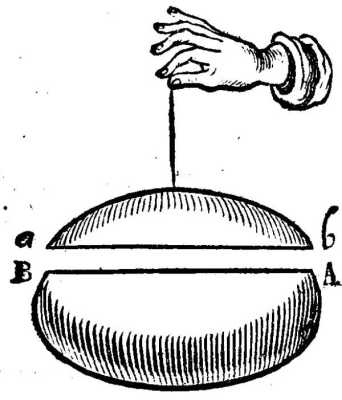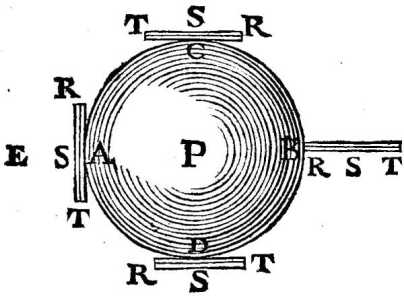Why do the parts of the magnet, which were united before, also repel each other?
Table of Contents
Superphysics Note
155. Why do the parts of a divided magnet also repel each other?
A magnet will spontaneously turn and assume the position opposite to that which it had before if:
- it is cut in a plane parallel to a line drawn through its poles, and
- the segment is freely suspended above the magnet from which it was cut

If N and n, and S and s were previously joined, then s will turn towards N, and n towards S.
This is because formerly the southern part of one was joined to the southern of the other, and the northern to the northern.
But after division, the virtual photons:
- coming out through the southern part of one must enter through the northern of the other
- coming out through the northern must enter through the southern.
156. Why are the 2 points that were previously contiguous in one magnet, in its fragments, of opposite magnetic polarity?

If a magnet is divided by a plane cutting a line through the poles at right angles, the poles of the segments that previously touched each other, such as b and a, are of opposite polarity.
This is because the virtual photons that emerge through one of these poles must enter through the other.
157. Why is it the same in some parts of a magnet as in the whole?

The same force is in any part of a magnet as in the whole.
This force is not different in the poles than in the other parts, but only appears greater, because through them emerge the virtual photons that have passed through the longest passages of the magnet, and which are the middle ones among all those coming from the same side.
At least in a spherical magnet, according to the example of which, in the rest the poles are considered to be where the greatest force appears.
Nor is this force different in one pole than in the other, except insofar as the virtual photons entered through one emerge through the other. There is no such small part of a magnet in which, if they have an entrance, they do not also have an exit.
158. Why does the magnet share its magnetism with the iron that is attached to it?
Iron, when attached to a magnet, acquires the magnetic force from it.
This is because iron already has channels suitable for receiving the virtual photons.
However, it is not initially magnetic because some of its small branches protrude from one side to the other.
All of these branches must be bent towards one and the same direction:
- one channel will allow the virtual photons coming from the South to pass
- another will allow those from the North in the opposite direction.
When the magnet is attached, the virtual photons rush like a torrent in great force and volume into the iron channels.
These bend these ends of the twigs in this way.
And so they themselves give all that is needed for the iron to become magnetic.
159. Why does iron receive this force differently according to the various ways in which it is brought near the magnet?
The part R of the iron RST, if applied to the northern pole of the magnet P, will become the southern pole of the iron.

- This is because the virtual photons coming from the south will enter through it.
- The northern virtual photons will enter through the part
T, reflected from the poleAinto the air.
The same part R, if it lies above the equator of the magnet and faces its northern pole, as in C, will again become the southern pole of the iron.
But if it is inverted and faces the southern pole, as in D, then it will lose the force of the southern pole and become the northern pole.
If the middle part S of this iron touches the pole A of the magnet, the northern virtual photons that have entered through S will emerge on both sides through R and T.
Thus, it will receive:
- the force of the southern pole at both extremities, and
- the force of the northern pole in the middle.
160. Why does not an oblong iron receive it, except according to its own length?
Why do these striped particles, entering part S from the pole A of the iron magnet, not go straight towards E. Instead, they are reflected from here towards R and T.
Thus, this iron receives magnetism according to its length instead of its width.
This is because they find much more open and easy ways in the iron than in the air, from which therefore the iron is reflected.
161. Why the magnet does not lose the force that it gives to the iron.
This is because no change takes place in the magnet.
The virtual photons issuing from it enter iron rather than any other body.
They pass more freely through iron than through other bodies and therefore also issue more copiously from the magnet when iron is joined to it.
This increases it rather than decreasing.
162. Why this force is most quickly communicated to iron, but is confirmed in it by lapse of time.
This force accrues to the iron in the briefest time, because the striped particles flow most quickly through it.
But it is confirmed in it by long delay, because the more the extremities of the little branches have remained bent in one direction, the more difficultly are they reflected in the opposite direction.